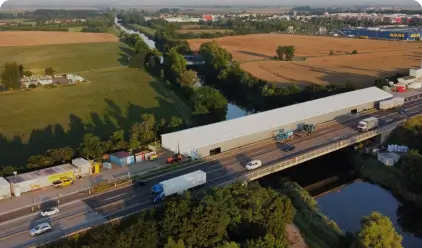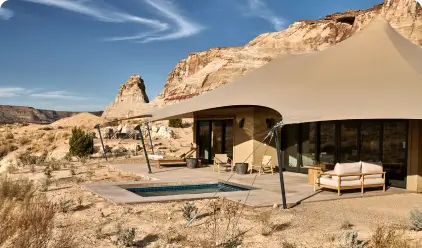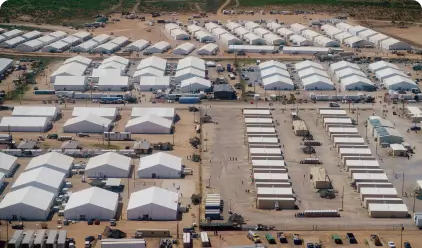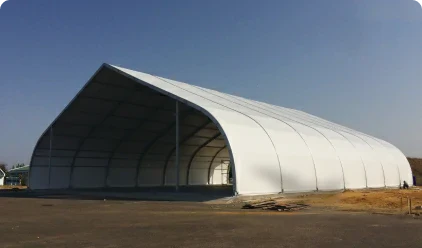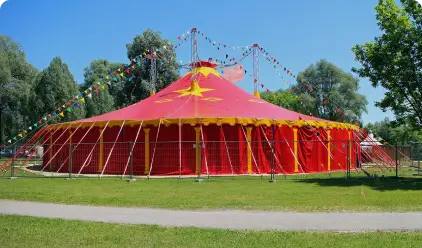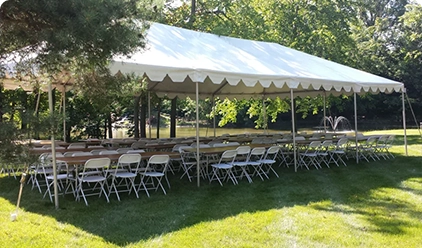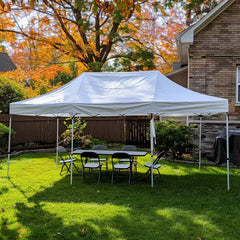The Ultimate Guide to Waterproof Tarp
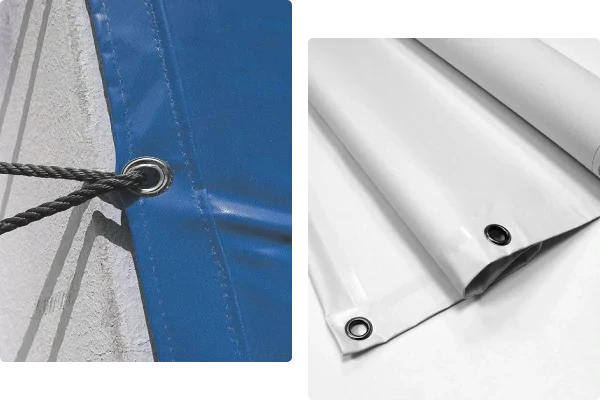
"Are Tarps Waterproof?"
Do you have the same dilemma? You want to buy a waterproof tarp, but it turns out it's not waterproof as you thought. The truth is that you may be confused with the concept of a waterproof and water-resistant tarp.
So it's vital to clear the difference between waterproof and water-resistant tarps. This article will introduce you to waterproofing in depth and help you choose the right waterproof traps.
What Is a Waterproof Tarp?
When it comes to tarps, waterproof means the tarp is designed to completely prevent water from passing through it. This is distinct from a water resistant tarp, which may only offer a limited amount of protection against water but is not fully impervious to it.
A waterproof tarp is constructed using materials and coatings that ensure no water can seep through, even under heavy rain or other harsh conditions.
In contrast, a water resistant tarp might offer protection in lighter showers, but over time or under heavy downpours, it can begin to allow water penetration.
How Do Tarps Become Waterproof?
Waterproof tarps are typically made by applying a coating or treatment to the fabric. For instance:
Polyethylene and PVC tarps are often coated with a plastic layer to make them a waterproof canopy. This coating fills the fabric’s fibers and creates an impermeable barrier.
Vinyl-coated tarps undergo a similar treatment, with an additional layer enhancing durability and UV damage resistance.
The process of making a tarp waterproof usually involves lamination or coating techniques that ensure the material’s fibers are sealed, preventing water from passing through. In some cases, manufacturers also use sealed seams to ensure water cannot seep through the stitching.
Is a Waterproof Tarp Right for You?
When choosing between waterproof and water-resistant tarps, it's important to weigh the advantages and disadvantages of each, based on your specific needs.
Pros:
- Complete Water Protection: Waterproof tarps provide full protection from rain, snow, and other elements, making them ideal for situations where exposure to water is a concern. In contrast, water-resistant tarps offer only limited protection and may allow some water through over time.
- Durability: Waterproof tarps are generally more durable and can withstand prolonged exposure to harsh weather conditions, including heavy rain and snow. On the other hand, water-resistant tarps may start to degrade in extreme conditions or after extended use.
- Versatility: Waterproof tarps are excellent for protecting valuable equipment, creating shelters, or covering goods during transport, especially in areas with unpredictable or heavy rain. Water-resistant tarps may be more suitable for lighter, short-term use, where water exposure is minimal.
Cons:
- Weight: Waterproof tarps tend to be heavier than their water-resistant counterparts due to the additional layers or coatings used to make them fully impervious to water. A water-resistant tarp might be a better option if you’re looking for something lightweight for quick and easy use.
- Cost: High-quality waterproof tarps, especially those made from heavy duty PVC, can be more expensive than water-resistant alternatives. If budget is a concern and your needs are less demanding, a water-resistant tarp could be more affordable.
- Breathability: Some waterproof materials, especially those with heavy coatings, lack breathability, which could lead to condensation buildup underneath the tarp. Water-resistant tarps are often more breathable, but they don't provide the same level of protection against water.
Common Waterproof Tarps for Protection
When it comes to choosing the best waterproof tarp, there are a few common materials to consider. Each type has its unique properties, advantages, and disadvantages:
Polyethylene Tarps
Polyethylene tarps are lightweight, durable, and relatively affordable, making them easy to handle and resistant to tearing. They are commonly used in outdoor applications like camping and construction.
However, while polyethylene is waterproof, it may not offer the same level of UV resistance as other materials, so prolonged exposure to the sun can cause it to degrade over time.
Vinyl Tarps
Vinyl tarps including clear vinyl options, are heavier-duty and made from strong vinyl material. These tarps provide excellent water protection, and the clear vinyl variety is particularly useful for creating weather-resistant barriers that still allow light to pass through. They are ideal for use in greenhouses, outdoor shelters, or protecting machinery.
On the downside, vinyl tarps tend to be heavier and more expensive than polyethylene, and they are less breathable, which can lead to condensation buildup under the tarp.
PVC Tarps
PVC tarps are known for being strong and fully waterproof, often used in industrial applications. They are highly durable, able to withstand extreme weather conditions, and resistant to UV rays, mildew, and mold.
The tarps in Sheltent are made of completely waterproof PVC, which can offer superior waterproof protection. However, PVC tarps are generally heavier and more difficult to handle than lighter materials like polyethylene, which can make them less convenient for some users.
Nonetheless, the robust PVC makes it more suitable for parties, business activities, storage, and other important occasions.
How to Maintain Waterproof Tarps?
Maintaining the waterproof qualities of your tarp is essential for ensuring its longevity and continued effectiveness. So how to maintain waterproof tarps? Here are a few tips:
- Keep It Clean: Regularly clean your tarp to remove dirt, debris, and mold that can affect its waterproof capabilities. Use mild soap and water, and avoid harsh chemicals that might damage the material.
- Dry Properly: Always dry your tarp thoroughly after use, especially if it has been exposed to rain or moisture. Storing a wet tarp can cause mildew to form, compromising its water resistance.
- Check for Damages: Periodically inspect your tarp for tears, holes, or any damage to the waterproof coating. Small punctures can be patched, but larger areas of damage might require a replacement tarp.
- Store Correctly: When not in use, store your tarp in a dry, cool place, away from direct sunlight, to prevent the waterproof material from degrading.
Buying Waterproof Tents from Sheltent
At Sheltent, we specialize in high-quality waterproof tarps and tents, designed to offer reliable protection against the harshest elements. Our tents are made from premium materials like PVC, ensuring full water resistance and durability.
Whether you’re setting up a campsite, protecting equipment during transport, or creating an outdoor shelter, Sheltent’s waterproof products will provide the protection you need.
Key Features of Sheltent Waterproof Products:
- Fully waterproof, providing total protection from rain, snow, and other elements.
- Made from high-quality PVC, ensuring long-lasting durability.
- Available in various sizes and designs to meet your specific needs, from small shelters to large protective covers.
- Choose Sheltent for your waterproof tent and tarp needs, and enjoy the peace of mind that comes with our expert craftsmanship and reliable performance.
Conclusion
Whether you need a polyethylene tarp for light protection or a PVC tarp for heavy-duty use, there are plenty of options to suit your needs. Don’t forget to check out Sheltent for high-quality, waterproof products that offer excellent value and reliable performance.




























